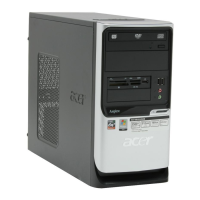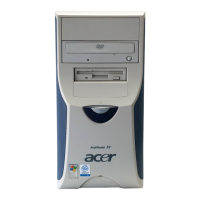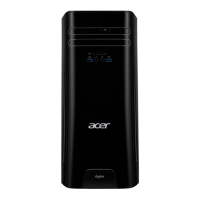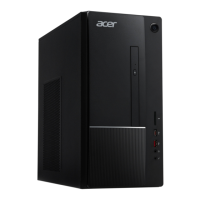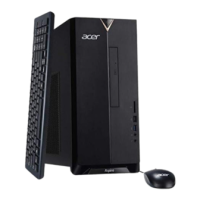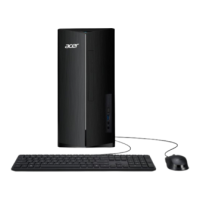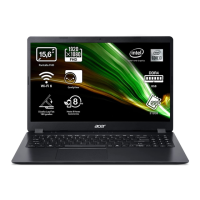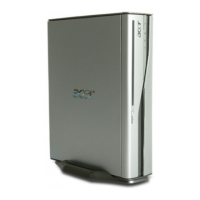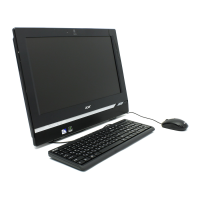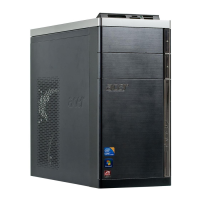Do you have a question about the Acer Aspire T100 and is the answer not in the manual?
Description of the computer's front panel components and their functions.
Description of the computer's rear panel connectors and ports.
Details on CPU, memory, drives, and power management features.
Features related to the audio system and microphone jacks.
Details on ports for keyboard, mouse, serial, parallel, USB, modem, and Ethernet.
Information on the included two-button wheel mouse and its connection.
Instructions for connecting the keyboard to the PS/2 port.
Instructions for connecting speakers and a note about them being optional.
Introduction to expanding and upgrading the Aspire T100 system.
General precautions for installing components, including ESD protection.
Steps to follow after installing or upgrading components, including checking connections and replacing panels.
Procedures for removing and replacing the computer's side panel.
Steps for replacing HDD, installing PCI cards, and adding memory.
Instructions for removing and installing the CPU, including heat sink attachment.
Key steps before setup: selecting a location and opening the package.
Advice on choosing an optimal location, avoiding electrical equipment, traffic, dust, and dampness.
Instructions to open the package carefully and retain packing materials.
Steps to connect all peripherals before powering on the system.
Steps to power on peripherals and the system to begin usage.
Procedure for normal shutdown via Start Menu and emergency shutdown by holding power button.
Conditions for compliance with FCC Rules, including interference acceptance.
Compliance with Canadian Interference-Causing Equipment Regulations.
Troubleshooting steps for power-on issues, checking LEDs, voltage, cables, and bootable media.
Solutions for a blank screen, including pressing keys and checking power management.
Steps to check printer power, cable connections, and refer to printer documentation.
Troubleshooting steps for no audio, checking volume, mute status, and headphone connections.
Steps to ensure correct media, formatting, and drive condition for reading data.
Troubleshooting steps for write errors, checking media protection and formatting.
Ensuring correct diskette type and formatting for write operations.
General advice for computer care, including avoiding sunlight, heat, moisture, dust, and physical shock.
Instructions for cleaning computer hardware like keyboard, mouse, and monitor.
Guidance on when to contact a service technician and how to get technical assistance.
